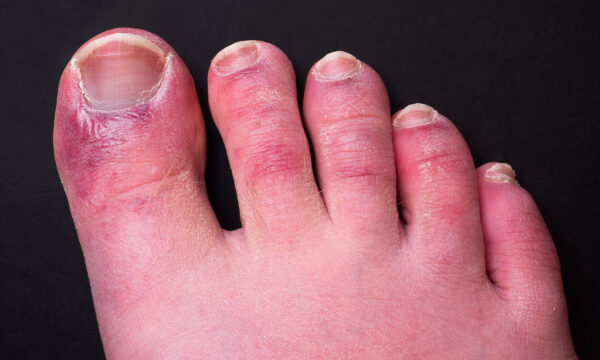


The COVID-19 pandemic has been associated with a broad range of symptoms, and medical professionals continue to study and understand them.
Along with the more commonly known symptoms, such as fever and dry cough, there have been reports that previous infection with the virus may impact the appearance of our nails, which is an intriguing area of investigation.
One of the most commonly reported nail-related symptoms of COVID-19 is called “COVID nails” or “COVID toes.” Fingernails grow in roughly six-month cycles, so any changes caused by COVID infection could be delayed by weeks.
Dr. Tim Spector, a professor in genetic epidemiology at King’s College London, drew attention to these symptoms in 2021 when he wrote in a Twitter post: “Do your nails look odd? COVID nails are increasingly being recognized as the nails recover after infection and the growth recovers leaving a clear line.” The so-called COVID nails can feature Beau’s lines or Mees’ lines.
Both conditions can be easily identified, Dr. Cameron Rokhsar, a laser surgeon and double board-certified in dermatology and micrographic dermatologic surgery, told The Epoch Times. “Mees’ lines are single, smooth lines that run across the entire width of the nail, and they do not fade with pressure,” he explained. Beau’s lines are ridges or dents that run across the nails and may fade when pressed, Rokhsar added.
Although not always caused by COVID, these nail changes can occur after infection. Beau’s lines can indicate illness, injury, or a skin condition that interrupts nail growth. They can be caused by high fever from infection, stress, or a reaction to medicines. Other conditions, such as heart attack or pneumonia, and even physical trauma, such as dropping something heavy on the nail, can also cause Beau’s lines.
Mees’ lines, on the other hand, can indicate a serious underlying health condition, such as kidney failure and heavy metal or arsenic poisoning. Other possible causes of Mees’ lines include altitude sickness, cancer, carbon monoxide poisoning, and chemotherapy.
Since the beginning of the pandemic, we’ve learned more about the effects of COVID on nails. It is now known that Beau’s and Mees’ lines aren’t the only changes that can happen to your nails after a COVID infection, and your toenails can also be affected.
According to a study published in 2021, nail abnormalities were found in 20 percent of COVID patients. More recent research from May 2022, which examined 43 adults treated for COVID, suggested that certain symptoms of COVID nails are more prevalent than others.
The most common include:
Rokhsar said that to the best of his knowledge, the red half-moon shape on nails is “a unique finding associated with COVID-19 infection and has not been linked to any other specific illness.”
However, nail bed erythema can result from bacterial infections, most commonly caused by Staphylococcus aureus. Other common causes include excessive manicuring, finger biting, and trauma.
Leukonychia and brown discoloration of the nail may indicate nutritional deficiencies or hyperthyroidism, respectively.
Another way in which COVID-19 can affect our nails is through onychomadesis, a condition in which the nail separates from the nail bed, possibly leading to complete nail loss. Onychomadesis has been reported in patients with various illnesses, including the Coxsackie virus, and it has been reported in individuals with COVID-19, according to the American Academy of Dermatology (AAD).
Rokhsar said any changes in the nails, such as discoloration, brittleness, thickening, splitting, or changes in shape, should not be ignored. “Some nail changes can resolve on their own, such as Beau’s lines,” he added. But it’s best to consult a board-certified dermatologist as certain conditions can worsen if left untreated.
Research suggests that nearly all types of nutritional deficiencies may impact nail growth in some capacity. However, specific nutrients have been found to impact nail health significantly.
Some of them are:

